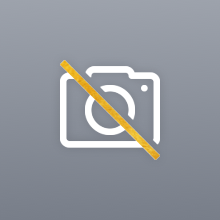TELDEC-Studio, Hamburg
Настоящее имя: TELDEC-Studio, Hamburg
Former TELDEC »Telefunken-Decca« Schallplatten GmbH recording and mastering studios, located in Hamburg.
Established in the early 50's by Telefunken for classical recordings, the studio became famous for various Schlager and Pop productions in the 70's and 80's, notably for [a921853].
Lacquer cuts from the studio can be identified by
- roman numerals (e.g. 𝙸, 𝙸𝙸, 𝙸𝙸𝙸, 𝙸V), standing for lathe / cutting room number (e.g. S-I, S-II, etc.) and/or
- "H" (= Hamburg), added to the engineer's scribe (e.g. S-I-H, S-H-II, S-H-III, S-IV-H, etc.).
The studio can be credited with Lacquer Cut At until the end of 1981.
Notes: Do not add roman numerals as runout symbols, but use I, II, III, IV only.
Do not confuse S plus roman numerals with Sonopress stampers (e.g. S I or S II or S III).
Starting 1982, the studio was converted to DMM cutting, installing Neumann VMS 82 lathes. Cutting room 2 being the first, cutting room 1 followed in mid 1983.
Between 1982 and 1984: use Mastered At, when in combination with S-II, S-II-H, or E2.
Between 1982 and July 1983: use Lacquer Cut At, when in combination with H1 or E1.
Between August 1983 and 1984: use Mastered At, when in combination with H1 or E1.
Note: the Hamburg engineers never added "DMM" to identify their copper cuts. However, when the matrix includes an ellipse ⬭ (may appear as incomplete c or as sideways 0) and/or "TD", the studio provided DMM cuts.
All mastering and cutting activities moved to Nortorf in mid 1984.
After the takeover by WEA (effective January 1, 1988), also the recording studio was closed.
Known lacquer / DMM cutting engineers:
Alexander Seeland, between 1953 and 1961
Klaus-Jürgen Schneider, chief engineer between 1964 and 1984.
Gerhard Schulze, operated cutting room 1 between the late 1950s and 1979.
Karl Schick, operated cutting room 2 between the early 1960s and 1984.
Peter Harenberg, operated cutting room 1 between 1978 and 1984 (occasionally did cuts before officially starting)
Achim Elsner, operated cutting room 1 between 1981 and 1984 (occasionally also in room 2).
The engineer's scribes are always etched, while the matrix is always stamped.
Runout scribes of so far unknown mastering / cutting engineers (possibly including engineers from the studios in Berlin) from the 1950s and 1960s:
F. (example: Wodka-Fox) - not Edgar Furhop
Fa. (example: Ein Echter Italiano)
G.- (example: Schweden-Mädel / Du Bist Musik) - potentially Herbert Grenzebach, Berlin
Ga- (example: Aufnahme Der Bachwoche Ansbach 1955 - Konzert C-Dur / Konzert A-Moll)
Gi (example: Arrivederci, Roma)
Gul (example: Orpheus In Der Unterwelt / Dichter Und Bauer (Ouvertüren))
He. (example: Aufnahme Der Bachwoche Ansbach 1955 - Konzert C-Dur / Konzert A-Moll)
Hi. (example: Susie Darlin' / Living's Loving You) - after 1977: check if stylized H1 for Peter Harenberg. Not Joachim Hinsch!
Ht (example: Shake A Hand)
Li (example: Grand-Hotel) - check if not Lt. for Heinz Lauterbach
L. or Lu. (example: Gefangenenchor Aus "Nabucco" / Schon Die Abendglocken Klangen / Jägerchor) - potentially Adalbert Lutter, Berlin
Lz. (example: Tutti-Frutti / I'll Be Home)
P. (example: Heut Spielt Die Kapelle Im Dorfkrug Zum Tanz / Aber Mit Musik)
SF (example: 4 Operettentrümpfe)
Su. (example: Kinder-Symphonie)
Sw. (example: Orpheus In Der Unterwelt / Dichter Und Bauer (Ouvertüren))
[Obsolete]
Osterstrasse 124
2000 Hamburg 20
